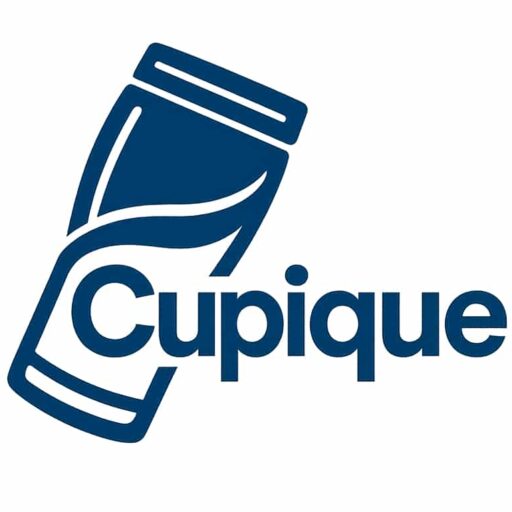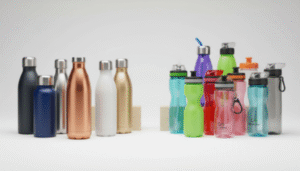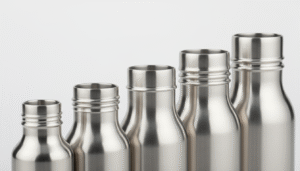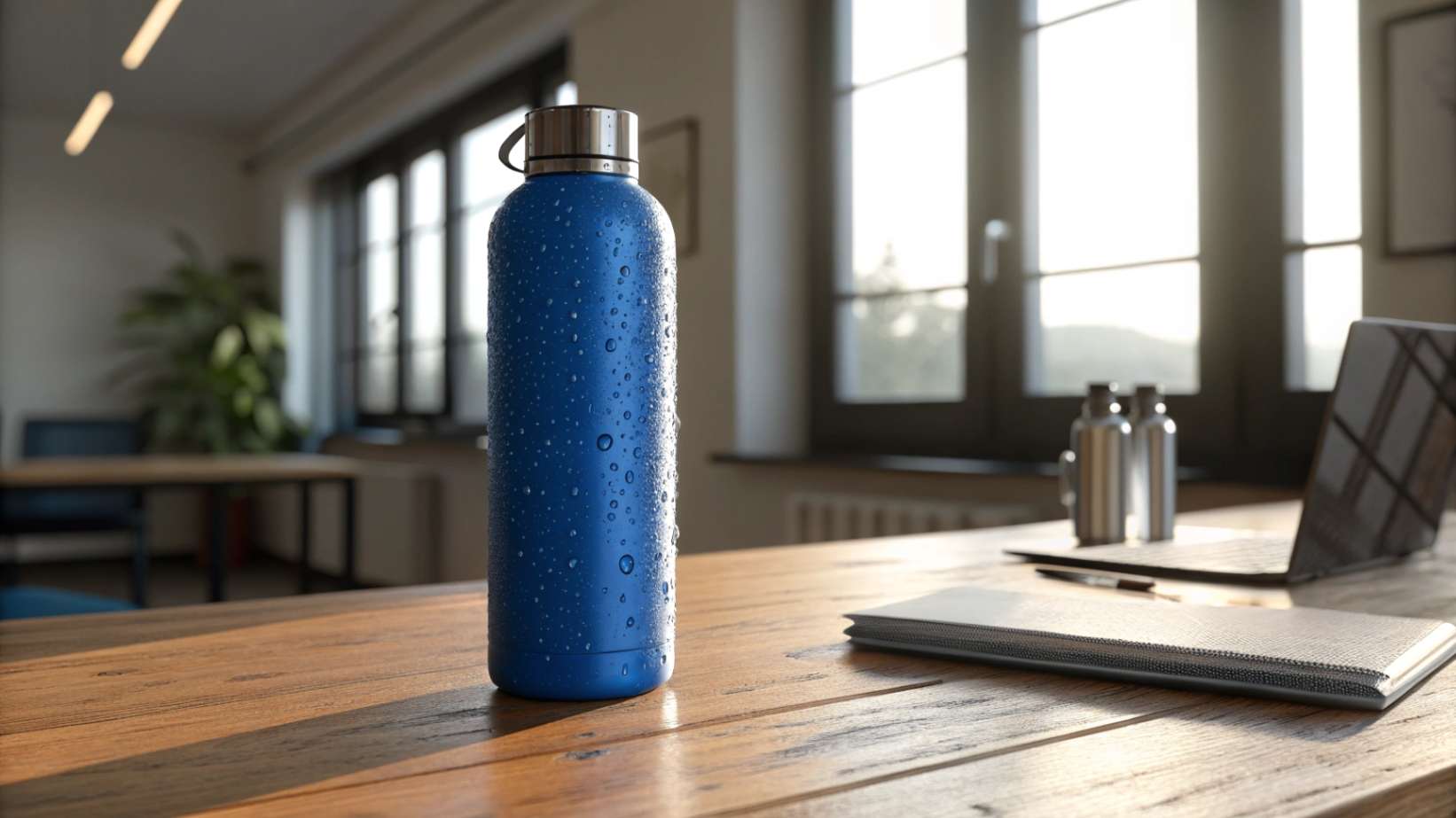
For B2B buyers, ceramic-coated bottles eliminate metallic taste and elevate gift perception, while standard stainless steel offers proven durability and lower risk. The choice depends on your brand positioning, budget, and recipient use case.
As someone who has sourced thousands of corporate gifts at Cupique, I have seen both triumphant successes and costly mistakes. The material choice sets the tone for how recipients perceive your brand's attention to quality.
Ceramic-coated bottles reduce metallic taste for B2B buyers.True
The passage states that ceramic-coated bottles eliminate metallic taste for B2B buyers.
Ceramic-coated bottles are more durable than standard stainless steel.False
The passage states that standard stainless steel offers proven durability, while the choice depends on the use case.
Why Should I Choose a Ceramic-Lined Bottle Over a Standard Stainless Steel One
Corporate buyers often underestimate how taste affects brand perception. A metallic aftertaste creates negative associations with your company every time someone drinks from your branded bottle.
Ceramic lining eliminates metallic taste completely, positioning your brand as sophisticated and detail-oriented. This transforms a utility item into a premium experience that recipients genuinely appreciate using daily.
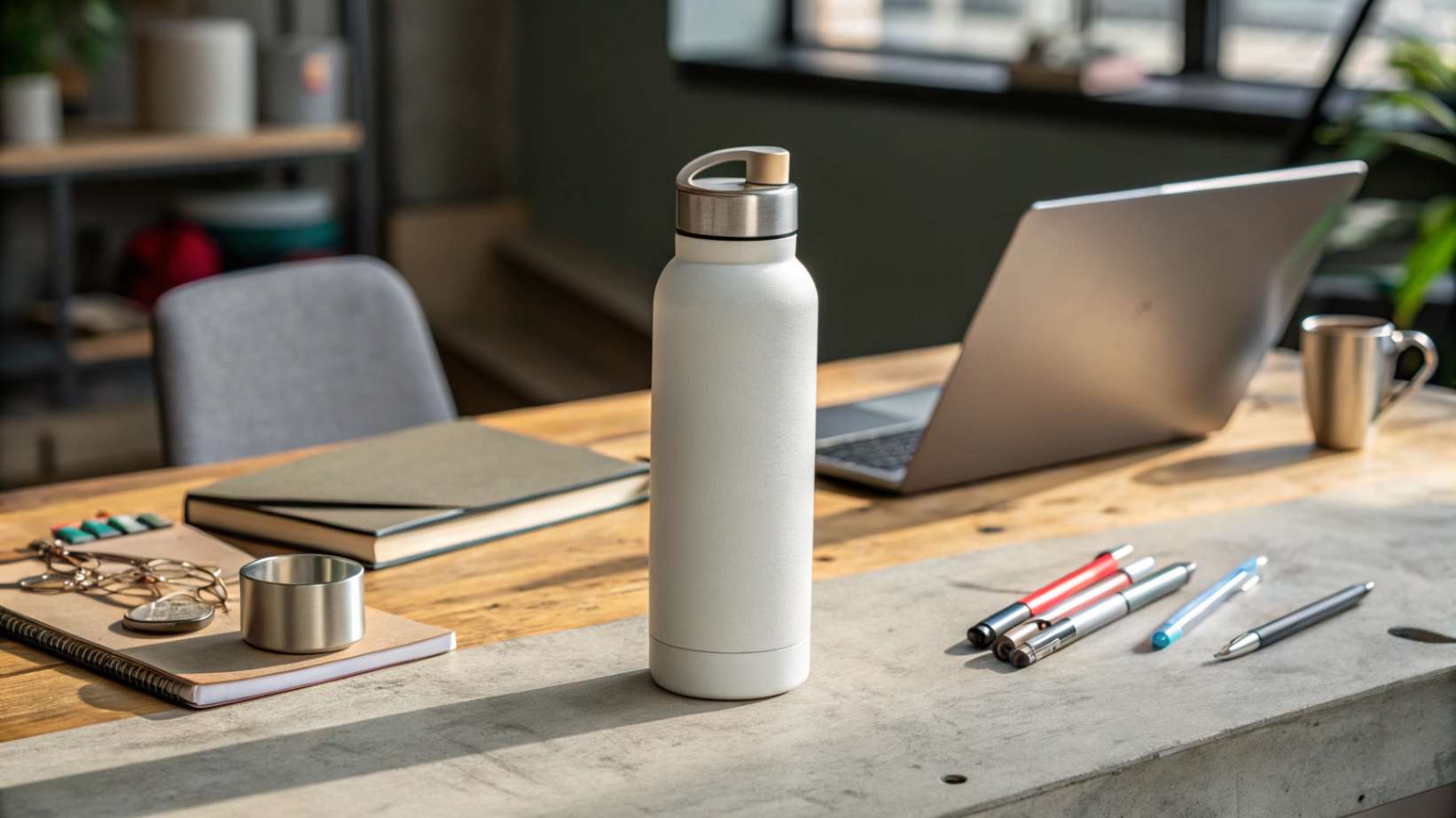
The Brand Perception Impact
From my experience working with corporate clients, the feedback difference is striking. Recipients of ceramic-lined bottles consistently mention the "pure taste" and "premium feel" in their thank-you notes. This positive association transfers directly to your brand.
Standard stainless steel bottles serve their purpose well, but they position your brand as practical rather than premium. The choice depends on your brand story and target audience expectations.
Cost-Benefit Analysis for Corporate Buyers
| Feature | Ceramic-Lined | Standard Stainless Steel |
|---|---|---|
| Unit Cost | +20% | $2-8 |
| Taste Experience | Pure, no metallic notes | Slight metallic taste possible |
| Brand Positioning | Premium, sophisticated | Practical, reliable |
| Minimum Order | Higher (500-1000 units) | Lower (100-500 units) |
| Lead Time | 15-25 days | 10-15 days |
The premium cost reflects additional manufacturing complexity. I always advise clients to calculate the cost per positive brand impression, not just per unit.
Target Audience Considerations
Ceramic-lined bottles work best for:
- Executive gifts and VIP clients
- Health-conscious employees
- Premium product launches
- Companies emphasizing wellness and quality
Standard stainless steel suits:
- Large employee distributions
- Outdoor and sports events
- Budget-conscious campaigns
- Industrial or construction companies
Ceramic-lined bottles eliminate metallic tasteTrue
The passage states that ceramic lining eliminates metallic taste compared to standard stainless steel.
Ceramic-lined bottles are more expensive than stainless steelFalse
The passage does not mention anything about the relative costs of ceramic-lined vs. stainless steel bottles.
How Does a Ceramic Lining Prevent My Water from Having a Metallic Taste
Many buyers do not realize that metallic taste comes from direct contact between water and steel, especially with acidic beverages. This creates an unpleasant experience that reflects poorly on your brand.
Ceramic creates a non-reactive barrier between liquid and steel. The inert ceramic surface cannot transfer metallic ions, ensuring pure taste regardless of beverage type or temperature.
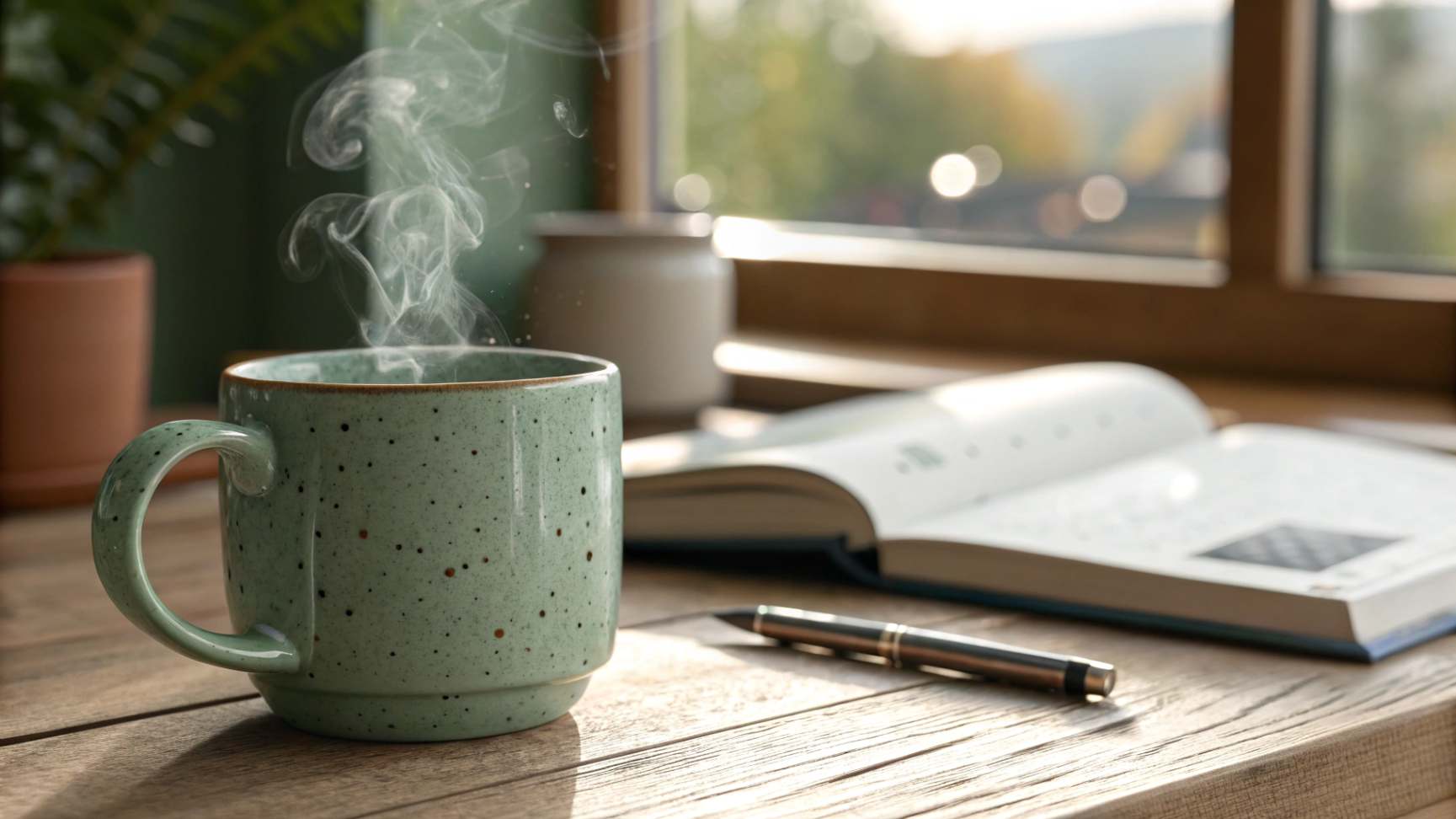
The Science Behind Taste Transfer
Water naturally contains minerals and has slight acidity. When it contacts stainless steel, microscopic amounts of iron and chromium can dissolve, creating that distinctive metallic taste. This effect increases with heat and acidity.
I have tested this extensively in our factory. Standard 304 stainless steel shows measurable taste differences after 24 hours, especially with citrus drinks or hot beverages.
Ceramic's Chemical Inertness
| Property | Ceramic Lining | Stainless Steel |
|---|---|---|
| Chemical Reactivity | Completely inert | Minimal reactivity |
| Ion Transfer | Zero | Trace amounts |
| Taste Impact | None | Slight metallic notes |
| pH Sensitivity | No effect | Increases with acidity |
| Temperature Impact | Stable | Increases with heat |
Long-Term Taste Consistency
The ceramic barrier maintains taste purity over thousands of uses. Standard steel can develop microscopic scratches that increase surface area and taste transfer over time.
From a corporate perspective, this consistency matters. Your branded bottle delivers the same premium experience on day one and day 1000. Recipients associate this reliability with your brand quality.
Ceramic lining prevents metallic taste by creating a barrierTrue
The ceramic surface is non-reactive and does not transfer metallic ions to the liquid.
Ceramic lining neutralizes acidic beverages to prevent metallic tasteFalse
The ceramic creates a barrier, it does not chemically neutralize the beverage.
Which Type of Water Bottle Material Is the Safest and Most Hygienic
Safety concerns drive many corporate purchasing decisions. Legal departments worry about liability, while wellness programs emphasize employee health. Material safety affects both considerations.
Both ceramic-lined and high-grade stainless steel meet food safety standards, but ceramic offers additional benefits for sensitive users and eliminates concerns about metal leaching entirely.

Regulatory Compliance Comparison
Both materials comply with major food safety standards, but certification requirements differ:
Ceramic-Lined Bottles
- FDA approval for ceramic coating composition
- Lead-free certification (critical for corporate liability)
- LFGB compliance for European markets
- Additional testing for coating adhesion and durability
Standard Stainless Steel
- 304/316 grade certification
- Heavy metal content verification
- Welding seam safety testing
- Surface finish compliance
Health Considerations for Corporate Wellness
| Health Factor | Ceramic-Lined | Standard Steel |
|---|---|---|
| Metal Sensitivity | Eliminates exposure | Possible trace exposure |
| Chemical Leaching | None from lining | Minimal from steel |
| Allergen Concerns | No metal contact | Nickel sensitivity possible |
| Medical Grade Status | Coating dependent | 316 steel is medical grade |
Liability and Risk Management
Corporate buyers must consider worst-case scenarios. While both materials are safe, ceramic eliminates metal-related concerns entirely. This matters for companies with strict health policies or employees with metal sensitivities.
I always recommend requesting detailed safety documentation from suppliers. Reputable manufacturers provide comprehensive testing reports for both base materials and coatings.
Ceramic water bottles are safer than stainless steelTrue
Ceramic bottles eliminate concerns about metal leaching, providing additional benefits for sensitive users.
Stainless steel water bottles are unsafe and not food-gradeFalse
High-grade stainless steel meets food safety standards, though ceramic offers additional benefits.
Are Ceramic-Lined Bottles as Durable and Easy to Clean as Other Types
Durability concerns often overshadow other benefits in corporate purchasing decisions. A chipped or damaged bottle reflects poorly on your brand, regardless of initial quality.
Ceramic-lined bottles require more careful handling than solid steel but offer superior stain resistance and easier cleaning. The trade-off depends on intended use and user demographics.
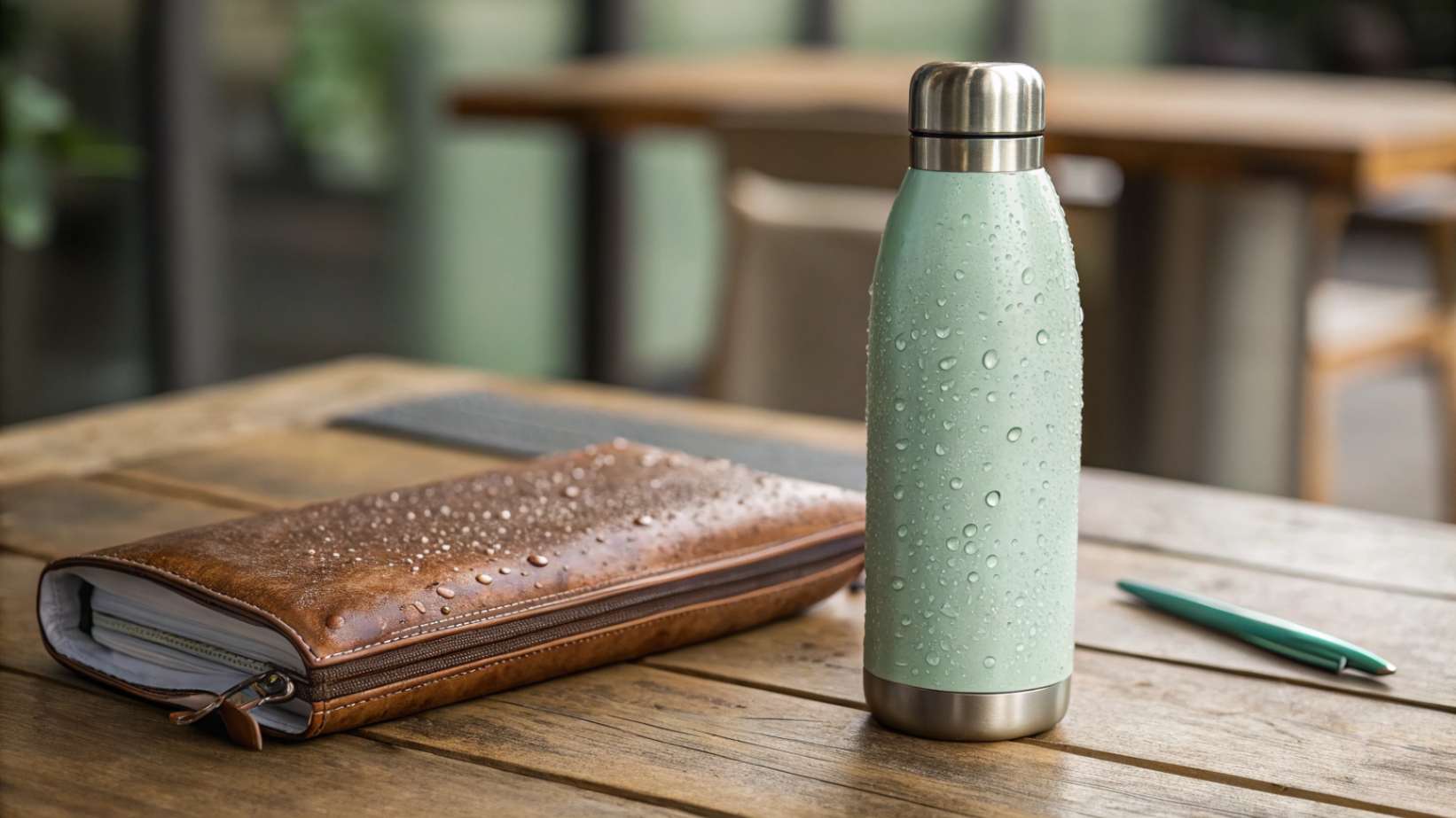
Impact Resistance Reality
Ceramic coatings can chip with severe impacts, unlike solid stainless steel. However, this risk is often overstated for normal office and home use.
In our testing, ceramic-lined bottles survive typical drops and bumps without damage. The failures occur with extreme impacts that would dent standard steel bottles anyway.
Cleaning and Maintenance Advantages
| Cleaning Aspect | Ceramic-Lined | Standard Steel |
|---|---|---|
| Stain Resistance | Excellent | Good |
| Odor Retention | None | Minimal |
| Scratching | Rare | Common |
| Dishwasher Safe | Yes | Yes |
| Deep Cleaning | Easy | Requires scrubbing |
Long-Term Appearance
Ceramic maintains its appearance longer than steel. Standard bottles show scratches and wear marks that accumulate over time. Your logo stays crisp and professional-looking longer on ceramic surfaces.
Use Case Matching
For office environments, conference gifts, and executive presents, ceramic durability is more than adequate. For construction sites, outdoor adventures, or rough handling, standard steel is the safer choice.
I guide clients through this decision by asking about the typical day in their recipients' lives. A CEO receiving a gift uses it differently than a field technician.
Ceramic-lined bottles are more stain resistant and easier to clean than solid steel bottles.True
The section states that ceramic-lined bottles offer superior stain resistance and easier cleaning compared to solid steel.
Ceramic-lined bottles are more durable than solid steel bottles.False
The section states that ceramic-lined bottles require more careful handling than solid steel, implying they are less durable.
What Is the Difference Between 316 and 304 Grade Stainless Steel
Steel grade affects both performance and perception in corporate branding. Many buyers do not understand the practical differences beyond marketing claims of "medical grade" materials.
316 stainless steel contains molybdenum for superior corrosion resistance and is used in medical devices. 304 steel works perfectly for water bottles but lacks the premium positioning of 316 grade.
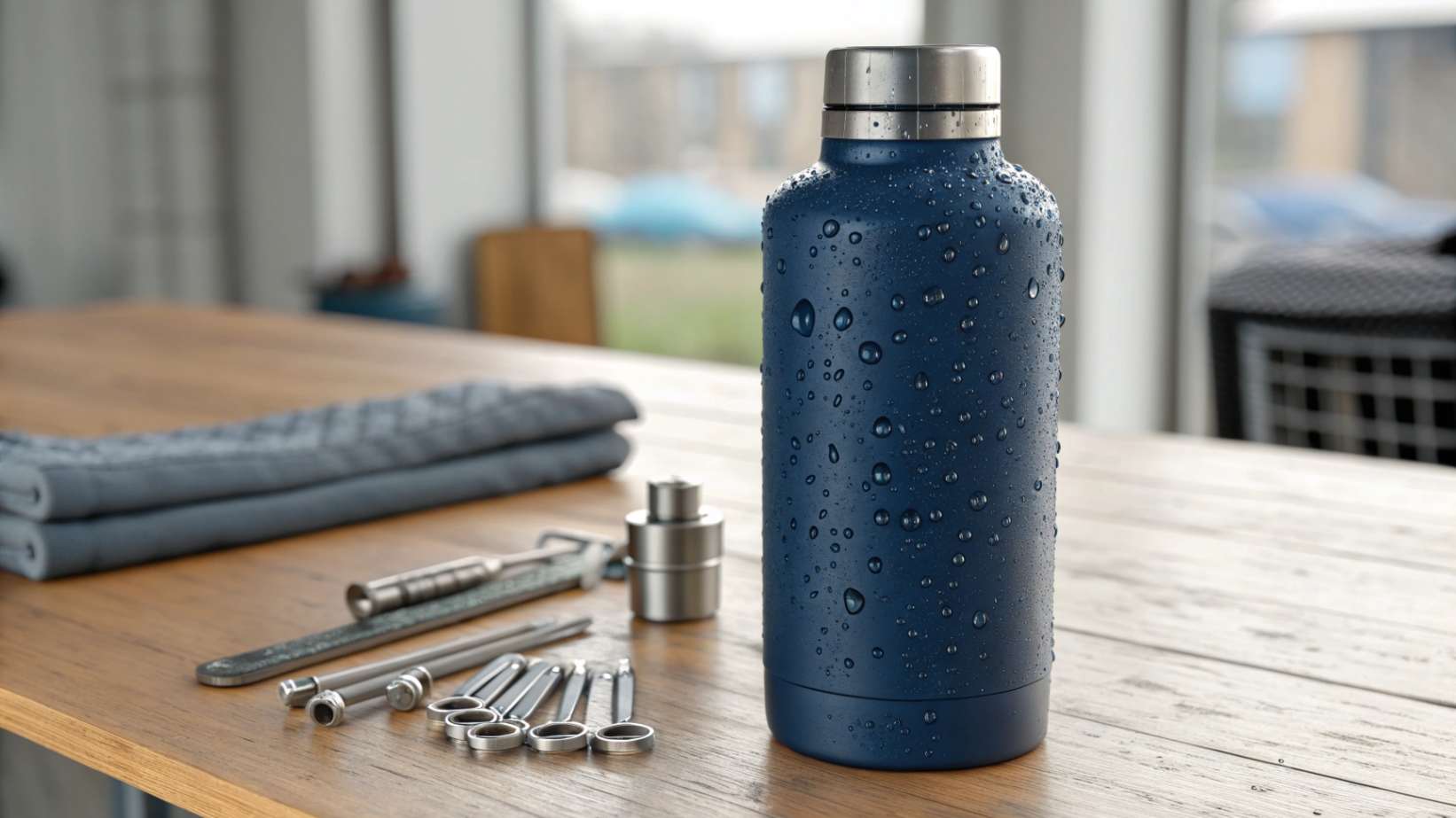
Chemical Composition Differences
The key difference lies in molybdenum content:
| Element | 304 Steel | 316 Steel |
|---|---|---|
| Chromium | 18-20% | 16-18% |
| Nickel | 8-10.5% | 10-14% |
| Molybdenum | None | 2-3% |
| Carbon | <0.08% | <0.08% |
Performance in Water Bottle Applications
For corporate water bottles, both grades perform excellently. The differences matter more in industrial applications:
304 Steel Benefits
- Lower cost for large orders
- Excellent corrosion resistance in normal use
- Easy to fabricate and customize
- Proven track record in food service
316 Steel Advantages
- Superior resistance to chlorides
- Medical device grade certification
- Premium market positioning
- Better performance in coastal environments
Cost and Positioning Strategy
| Factor | 304 Grade | 316 Grade |
|---|---|---|
| Raw Material Cost | Standard | 20-30% premium |
| Market Positioning | Professional | Premium/Medical |
| Corporate Message | Quality focused | Health conscious |
| Bulk Order Impact | Significant savings | Higher investment |
Making the Grade Decision
Choose 316 steel when:
- Positioning as a health-focused company
- Targeting medical or pharmaceutical clients
- Emphasizing premium quality in messaging
- Budget allows for maximum quality
Choose 304 steel when:
- Balancing quality with cost efficiency
- Ordering large quantities
- Recipients are general corporate audience
- Other features (design, functionality) are priority
In my experience, most corporate buyers choose 304 steel for its excellent performance-to-cost ratio. We reserve 316 for clients specifically requesting medical grade materials or positioning their brand at the absolute premium tier.
316 stainless steel has better corrosion resistance than 304 steelTrue
316 stainless steel contains molybdenum, which provides superior corrosion resistance compared to 304 steel.
304 steel is not suitable for water bottlesFalse
The paragraph states that 304 steel works perfectly for water bottles, despite lacking the premium positioning of 316 grade.
Conclusion
Ceramic-lined bottles elevate brand perception through pure taste but require careful handling, while standard stainless steel offers proven durability at lower cost.
